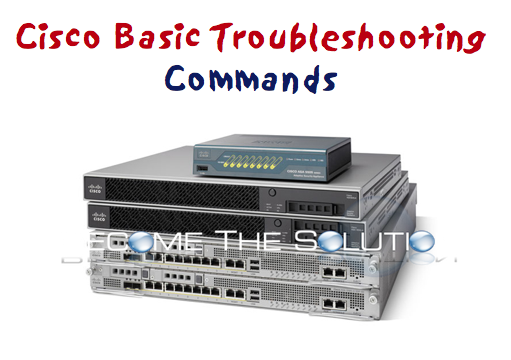- Often network engineer always give me Cisco Profile Configure File (.pcf) file to configure Cisco VPN connectivity. This file is good for Windows environment, but it is useless when I wanted to configure in Mac OS and RHEL. The following is some quick guide to extract some information from pcf file and use it to configure in MacOS and RHEL.
- Mac (Intel Macs and Macs with Apple M1 Chip) VPN Gateways: Supports over 300 VPN devices by leading manufacturers: Supported VPN protocols: IPSec, OpenVPN, L2TP, PPTP., SonicWALL SSL, Cisco Meraki, Cisco EasyVPN, SonicWALL Simple Client Provisioning, Mode Config, SSTP VPN. (Beta), Fortinet SSL VPN. (Beta) and more: Supported VPN configurations.
- B.On your Mac, click. Add VPN Configuration. Step 2: Enter VPN server details on Mac. Click the + button on the left-bottom corner of the network configuration screen. Select VPN for the Interface field. Select Cisco IPSec for the VPN Type field. Enter the name for the VPN connection. Step 3: Create a VPN connection.
Apple recently released Mac OS X 10.11.4, the latest update for OS X El Capitan. I’m generally an early adopter. If I’m not running a beta release (which I must admit, I’m not doing nearly as much of anymore), I am certainly the first in line to update OS X or iOS to the latest release as soon as it’s reached GA status.
If you’re like me, the latest OS X update, 10.11.4, broke some VPN profiles, specifically certain Cisco IPsec profiles. When I first discovered the VPN client wouldn’t connect to a Cisco IPsec profile that was working just fine before the update, I first thought it may be a problem on the remote end, or even perhaps with my ISP. I tried a secondary VPN profile that’s L2TP over IPsec and had no issues. I then tried a third profile using Cisco IPsec, with no luck. After successfully connecting to a fourth VPN profile (also L2TP over IPsec), I was beginning to think the issue had nothing at all to do with the original VPN endpoint I was attempting to connect to or my ISP. A quick test of the same VPN profiles on a second Mac that had been updated to 10.11.4 yielded the same results, even when connected to a second ISP, confirming my theory.
Use the macOS or iOS Native IPSec VPN Client Apple iOS devices (iPhone, iPad, and iPod Touch) and macOS 10.6 and higher devices include a native Cisco IPSec VPN client. You can use this client to make an IPSec VPN connection to a Firebox.
What next? Google to the rescue, of course!
A quick search for “OSX 10.11.4 IPsec” yielded a thread in Apple’s Support Communities that was opened just yesterday with multiple users having similar issues. Yes, I was on to something – my Google Foo was strong!
After reading through a handful of “me too’s”, I found a reply that suggested increasing the DH Group to 14 on the VPN appliance would fix the issue. Of course I was remote – the reason I was trying to connect to VPN in the first place, so I couldn’t test this theory until later when I actually made it onsite. I can confirm that in my case, changing the DH Group to 14 solved my problem. It appears that starting with OS X 10.11.4, Apple requires a minimum of a 2048 bit modulus (DH Group 14) to connect to IPSec VPNs. These two “broken” VPN profiles were using 1024 bit modulus.
How to modify an existing IPsec Tunnel on a FortiGate firewall using FortiOS 5.4
If you have an IPSec VPN Tunnel configured on a FortiGate firewall, and you used the default “Dialup – Cisco IPsec Client” template, it’s likely that your DH Group is set to 2. I couldn’t find a way to modify the DH Group for an existing IPSec tunnel in the FortiOS 5.4 GUI, but here are the CLI commands to make the change:FW01 # config vpn ipsec phase1-interfaceFW01 (phase1-interface) # edit YOUR_VPN_TUNNELFW01 (YOUR_VPN_TUNNEL) # set dhgrp 14FW01 (YOUR_VPN_TUNNEL) # end
That’s it! One thing I love about the FortiOS CLI is that it’s incredibly powerful, yet very easy to navigate – much easier to navigate than Cisco IOS in my opinion. I was able to apply this to a handful of FortiGate firewalls that I manage for SquarePlanIT customers who were using Cisco IPsec VPN tunnels and weren’t already using a 2048 bit modulus. Speaking of managed firewalls – if you’re looking for a managed IT solutions provider, or even just have some project work to knock out, get in touch! I’d love to tell you about all that we have to offer.
Learn more about Diffie-Hellman groups
To learn more about the Diffie-Hellman key exchange, here’s an excellent Wikipedia article. For a brief overview of the different DH Groups that can be configured, check out here’s a Cisco Support Community article.
Topics Map > NMSU Services > VPN
If the Cisco IPSec software for Mac OS X that you are using is no longer supported by its manufacturer, Cisco, you have another option. Besides using the new Cisco anyconnect VPN client you can use the Mac OS X native VPN client.

Cisco Ipsec Client

- Server Address: vpn.nmsu.edu
- Account Name: your myNMSU username
- Password: your myNMSU passphrase
Macos Cisco Ipsec Log
Cisco Ipsec Vpn Mac Os X
If you have any questions, come by the Help Desk at Hardman & Jacobs Undergraduate Learning Center Room 105, call 646-1840, or email us at help@nmsu.edu.
